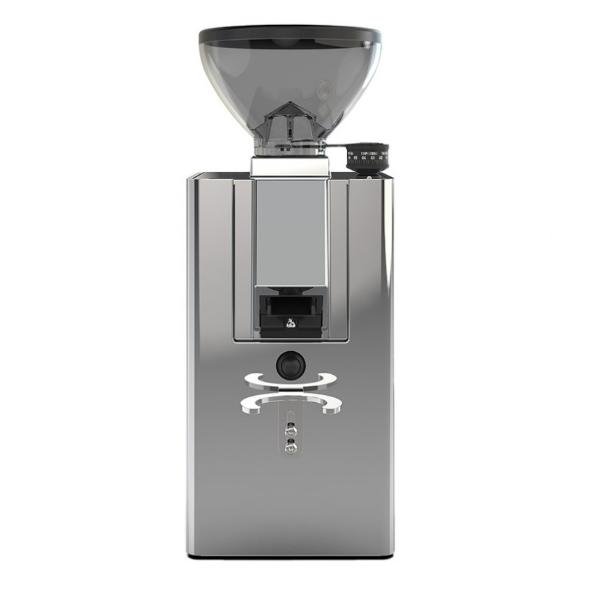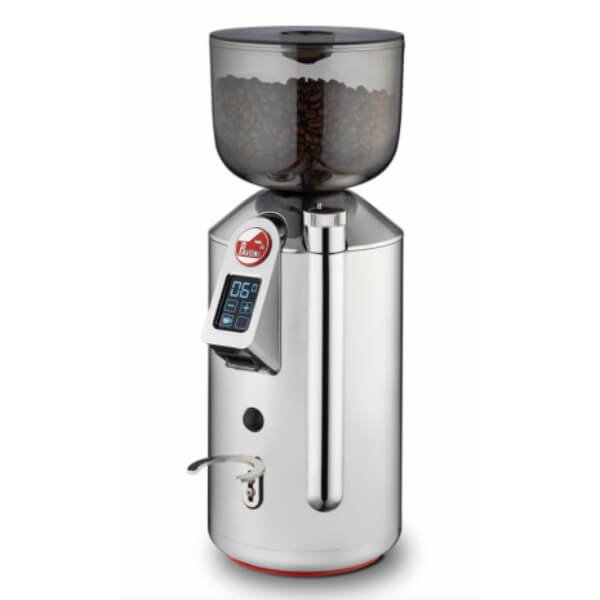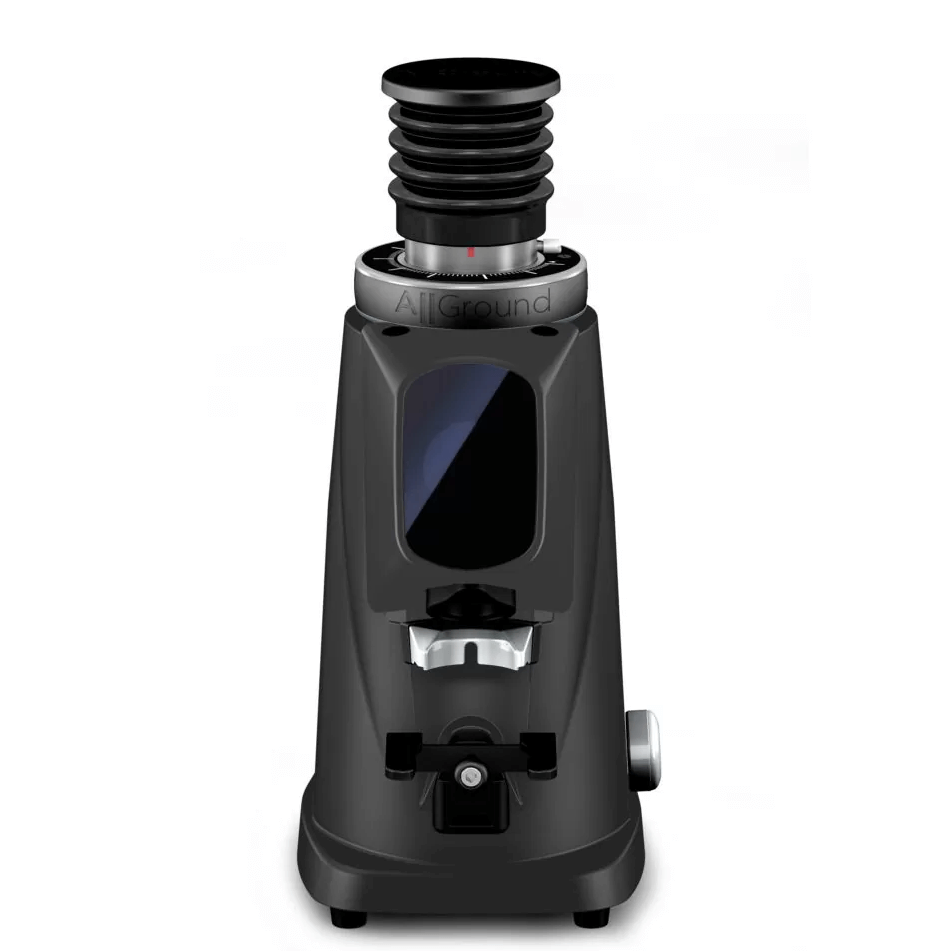Italian Coffee Grinders - Buying Guide
Welcome from me, Paul, owner of K Bean Coffee Machines, Melbourne. I supply the best Italian coffee grinders for home along with Free Training at my shop (1 Keys Street, Beaumaris). If you are not local you can buy online with Free Shipping.
Start with my recommended Italian coffee grinders below, then scroll down to read my guide.
Why is a Quality Coffee Grinder so Important?
Controlled extraction speed is essential for great espresso and with a consistent Espresso Workflow speed is controlled by a single variable - coffee grind particle size. This means that to get the best from your Italian coffee machine you should pair it with a premium coffee grinder.
Choosing a Coffee Grinder For Home
When looking for an Italian coffee grinder consider
Performance (control & consistency)
Quality (build quality & durability)
Experience (noise, mess, usability)
Performance refers to grind quality. Grind quality is important, but it isn’t the only factor to consider. You don’t want a grinder that is noisy or messy, and you don’t want one that breaks down, so choose a high quality coffee grinder that is a joy to use.
Should I Choose a Grinder With a Blow Hopper or a Standard Hopper
If you are considering a grinder with a blow hopper because you value coffee freshness then reconsider. When it comes to freshness there is negligible benefit to single dosing as every time you open a bag of beans you let air in, and when you reseal the bag you trap the new air.
Single dosing does have its place. If you like to change beans from shot to shot, a single dose coffee grinder is a great idea. However, most people enjoy the same coffee beans every day, so for most people a grinder with a hopper is the best choice. Just fill the hopper and use the beans within 1-2 weeks, and choose a grinder with a digital timer for a quick and easy workflow.
Coffee Grinder Categories
Appliance Blade Grinders Blade coffee grinders chop beans resulting of a blend of powder and chunks. These are not suitable for use with any espresso machine.
Appliance Burr Grinders Although entry level appliance grinders are not suitable for espresso machines, some high end appliances, with conical burrs, can do the job. However, even the best of these will struggle to achieve the grind size control required to get the best results from a manual coffee machine.
Premium Domestic Grinders These are compact coffee grinders, designed for home use, and generally optimised for low mess coffee grinding with low grind retention. Although many of these perform well, for a jump in build quality I always recommend looking to a compact commercial grinder.
Compact Commercial Grinders These are generally the best coffee grinders for home as they offer a step up when compared to domestic grinders when it comes to performance (eg, quicker, quieter, lower grind retention). They will also outlast domestic coffee grinders. Buy once, and buy well.
Large Commercial Grinders These are not recommended for home as they are designed with grind speed as a highest priority for high throughput café use. Most have have high grind retention due to large grind chambers and long chutes. Compact commercial grinders are a better choice for a home barista.
Italian Coffee Grinder FAQs
I know the questions that come to mind for new home baristas, and if I get asked a question 3 times I write an FAQ. This has become a great way for me to share handy tips online. Scroll below to learn more.
+ How do I choose the best coffee grinder for home?
I am here to help you to choose the best coffee grinder for your home and in most cases you will find that this will be one of my recommended grinders. When making recommendations I draw upon 15 years of experience to answer a simple queston: "which coffee grinder would I choose for my own home given a budget of x?"
+ Can I use an appliance coffee grinder?
When people step up from an appliance coffee machine to an Italian coffee machine, they often ask me if they can keep their appliance coffee grinder.
The good news is that most find that they can keep on using their appliance coffee grinder. The bad news is that this is a temporary solution as most appliance coffee grinders cannot give the grind particle size consistency or control needed to get the most out of a manual espresso machine.
If you do decide to keep on using your appliance grinder be prepared to upgrade to a premium coffee grinder in the not too distant future.
+ Which specs help when choosing a coffee grinder?
When looking for a coffee grinder you will come across tables covering specifications including burr size (mm), burr speed (rpm) and motor power (W).
It’s a common misconception that a grinder with a more powerful motor will grind faster. This is not the case as all that a grinder needs is enough power to drive the burrs as they cut through the beans. All premium grinders can do this with ease.
Of the specifications mentioned above, only burr size and burr speed are useful. This is because both of these have an effect upon grind speed, with grind speed increasing as burrs get larger and as burr speed increases. Large burrs have one more advantage. They allow a grinder to grind fast at low rpm. This eliminates the heat build up issues encountered with small burr, high rpm girnders.
+ Is it important to get a stepless coffee grinder?
Steps on appliance coffee grinders are an issue because of large changes to coffee particle sizes between settings. With commercial coffee grinders stepped adjustment is far less of a problem.
Of course, stepless adjustment is the way to go if you are an espresso aficionado looking for the ultimate in grind particle size control. Only a stepless coffee grinder will allow you to accurately adjust your grind size to control the speed of espresso extraction.
+ Is a timer useful on a home coffee grinder?
Timed dosing is not always accurate. Many grinders have poor dosing accuracy due to a waterfall effect as grinds exit long chutes in cascading clumps. With these grinders dosage variations of up to 3 grams is typical. This variation is too high for controlled espresso extractions, so I always recommend using scales with these grinders. Although weighing the dose is an extra step in your espresso workflow, it is a step well worth having.
Of course it's best to choose a grinder with low grind retention and accurate and repeatable time based dosing. With these grinders you can skip the weighing step. You will find these grinders in my Buying Guide
+ Is low grind retention important?
As you dig deeper into the home espresso hobby you will soon start reading about grind retention. So, what is grind retention? Grind retention is the amount of ground coffee that is left in a coffee grinder after grinding. This coffee is retained in the grinding chamber and in the exit cute.
There are 2 issues with grind retention. The first is that retained grinds can go stale. Consider a grinder that retains 5g of coffee. When you grind your first 18g for the day from this grinder, 25% will be a little stale. The difference in the cup won’t be detectable by most. However, some espresso aficionados will notice.
The second issue with grind retention is the effect upon grind particle size control. Again, consider a grinder that retains 5g of coffee. When you adjust the grind setting between shots you will adjust it for only 13g of the next 18g to exit the chute. This means that tuning a grinder with high grind retention can be a little tricky.
The 2 issues above can be avoided by purging the stale grind between shots, but purging wastes great coffee so a better solution is to choose a home coffee grinder with low grind retention.
+ What coffee grinders are useful for single dosing?
The practice of single dosing involves adding the beans needed for a single shot to the hopper, then grinding them all up.
If you are considering single dosing because you value coffee freshness then reconsider. When it comes to coffee freshness there is negligible benefit to single dosing as every time you open a bag of beans you let oxygen in, and when you reseal the bag you trap this new oxygen. My advice is to keep your bag of coffee beans sealed until you need the beans, then open the bag, fill the hopper, and use the lot within 1-2 weeks.
Single dosing does have its place for people who regularly change beans. If you plan to single dose, look for a coffee grinder with low grind retention. Low grind retention is critical for regular bean changes.
+ Can a grinder toggle between fine and coarse grind?
Most premium grinders are able to toggle from espresso grind, to manual brewing grind, and then back again. This includes the range of coffee grinders from Eureka
For example, to change from espresso grind to pourover grind on a Eureka grinder you simply twist the grind adjustment knob 2 revolution. After grinding for pourover you twist the grind adjustment knob back 2 revolutions to get back to your precise espresso grind. Note that when adjusting from coarse to fine grind you must either pulse the grinder at intervals, or run the grinder as you make the adjustment.
+ What type of burrs are best for a coffee grinder?
Many large commercial grinders have conical burrs. The reason for this is that conical burrs cut faster than planar burrs of the same diameter and for commercial use fast grinding is a high priority.
When it comes to grind quality, planar burrs are the winner. Planar burrs have been proven to grind more consistently than conical burrs in numerous studies.
When it comes to in-the-cup results the winner is less clear. Whilst it is widely agreed that burrs do have an effect upon espresso flavour profiles, consensus is that these flavour nuisances are small. To most the in-the-cup differences are negligible.
So are conical burrs are better than planar burrs? If by better you mean “faster grinding,” then yes. If by better you mean “better results,” then no.
+ Are large burrs better than small burrs?
Commercial grinders are always partnered with large burrs. The reason for this is that large burrs result in fast grinding speed.
The problem with large burrs is that many grinders with large burrs have high grind retention becuase of their large grinding chambers. This is why small burrs are often a better choice when choosing a coffee grinder for home.
+ How important are quality cutting burrs?
Cutting burrs are made from a range of materials including stainless steel and hardened steel.
Stainless steel burrs will loose their sharp cutting edge quickly so I always recommend choosing a coffee grinder with hardened steel burrs. Hardened steel burrs are generally ok for ~500kg of coffee.
+ How often will I need to replace the burrs?
Burrs should be replaced when they lose their sharp cutting edge. A guideline to replacement intervals for grinders used at home is:
- 5 years - stainless steel burrs
- 15 years - hardened steel burrs
+ Is there a mess free home coffee grinder?
Grinding used to be a messy affair, with every grind followed by a grinder and bench top wipe down.
There were a few causes of this. One was that messy dosser grinders (the ones that click) where still commonplace. The grind-on-demand Italian coffee grinders that were available often spurted out clumpy coffee grinds with coffee particles charged by static. The static meant that coffee particles would really stick onto metallic grinder bodies.
The good news is that dosser grinders have been left in the past with mostly grind-on-demand grinders on the market today. Most of these grinders are low mess and many are completely mess free thanks to new designs and coffee grinder innovations.
+ How much should I spend on a coffee grinder?
Italian coffee grinders start near $500. Stretch a little further and you will reach premium coffee grinders for a home barista experience without compromise.
What does without compromise mean? It means coffee grinders that are built to last 20 years with low noise, low mess, clump free grinding and low grind retention.
My advice is to stretch to a premium commercial coffee grinder. Spend just a little extra now to get a coffee grinder that you can really enjoy as you master the art of home espresso.
I often find myself giving this advice at the showroom. If you are considering a high end machine with an entry level grinder, change your thinking. A mid range coffee machine and a high end coffee grinder is generally a better choice. Don’t underestimate the importance of a quality coffee grinder.
+ Will spending more result in better coffee?
Coffee in-the-cup and shot-to-shot repeatability will improve if you move up from an appliance (eg, Sunbeam, Breville) to an entry level (circa $500) Italian coffee grinder. All Italian coffee grinders are capable of grinding exceptionally well.
So why not stop at a $500 grinder? Reasons for spending more include improvements to build quality, durability, noise and mess. It's worth spending a little more to get a quiet and tidy coffee grinder that will last 20+ years.
+ How do I set up a new coffee grinder?
When setting up a new coffee grinder you need to adjust the gap between the cutting burrs to get coffee particles that enable a 30 second espresso extraction.
This process is known as tuning in a grinder. Here are the steps:
- Grind some coffee and check the particle size. If the particle size is too coarse (like caster sugar) adjust the grind finer (smaller number). If the particle size is fine (like flour) adjust the grind coarser (larger number).
- Continue until you get a particle size that is somewhere between caster sugar and flour.
- Follow the steps in my Espresso Workflow and pull your first shot.
- Note the extraction time.
- Follow the steps in my Espresso Workflow to fine tune your coffee grinder.
- When you are getting extractions near 30s your grinder is tuned in.






Turin DF54
a rock solid single dose coffee grinder - great value